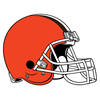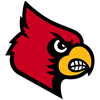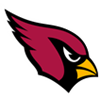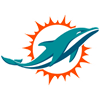As many of you have probably noticed, the initial reports on NFL contract numbers are often exaggerated or downright inaccurate. Sometimes this happens due to honest mistakes, but mostly it's a result of the big-name national reporters doing not-so-subtle favors for the agents that provide them with scoops.
In this context, it's annoying, though harmless. What I find more troubling is how often political journalism functions the same way, and in that case we sometimes have to wait years to find out the truth of things... or never do. When it comes to NFL contracts, we usually know the real deal within a week or two after a signing is announced.
The numbers you'll see below are pulled from Spotrac and OverTheCap, the two sites that track NFL contracts in a thorough manner. Their information is almost always correct, though there was a recent example of both being wrong on the same player (they both reported Alexander Mattison's 2024 salary with the Vikings as being guaranteed) in a way that impacted fantasy analysis, including my own.
Contracts certainly aren't the end-all, be-all when it comes to fantasy, but they do provide context about how the market and/or a specific team views a player. It's useful information for redraft players, and even more useful for those like me that play a lot of dynasty.
Below I'll cover the top signings at each fantasy position (QB/RB/WR/TE/K), making special note of cases in which the reality is far different from initial reports. Players are sorted by strength of contract, and clustered together accordingly. I used $1.5 million guaranteed as the low-end cutoff, as the guys below that point are players I wouldn't consider taking even in the 20th round of a best-ball draft (besides a few backup RBs like Rico Dowdle, Ty Johnson and D'Onta Foreman).
When I list the amount of money a player is guaranteed next to his name, I mean it in the literal sense, i.e., that's the amount a player is assured of receiving at the time of signing. This doesn't include "guarantees" that kick in later, nor injury guarantees, though I'll note the presence of those things when significant. Let's get to it!
Quarterbacks
Tier 1
 Kirk Cousins - Four Years, $180 million / $90m guaranteed
Kirk Cousins - Four Years, $180 million / $90m guaranteed
The guarantees are for Cousins' signing bonus ($50 million), 2024 salary ($12.5 million) and 2025 salary ($27.5 million). He then has a $10 million roster bonus for 2026 that becomes fully guaranteed if/when he's still on the team in March 2025, i.e., he's almost certainly getting $100 million or more out of this contract. In practical terms, the Falcons can move on after two seasons and $100 million, or three years and $135 million.
Tier 2
 Gardner Minshew - Two Years, $25 million - $15m guaranteed
Gardner Minshew - Two Years, $25 million - $15m guaranteed
Minshew lands in his own contract tier, somewhere between starter and backup money. That sounds about right, given that his ability also falls in that range. This is an ideal outcome for anyone rostering Minshew in a two-QB dynasty league, as he'll have Davante Adams, Jakobi Meyers and Michael Mayer as weapons while competing with Aidan O'Connell and/or a rookie for a starting job. I don't think many people predicted that Minshew would end up with better odds than Justin Fields to start Week 1.
Tier 3
 Sam Darnold - One Year, $10 million / $8.75m guaranteed
Sam Darnold - One Year, $10 million / $8.75m guaranteed Jacoby Brissett - One Year, $8 million / $6.5m guaranteed
Jacoby Brissett - One Year, $8 million / $6.5m guaranteed Tyrod Taylor - Two Years, $12 million / $8.5m guaranteed
Tyrod Taylor - Two Years, $12 million / $8.5m guaranteed Marcus Mariota - One Year, $6 million / $5.39m guaranteed
Marcus Mariota - One Year, $6 million / $5.39m guaranteed
Three of the four guys at the high end of the backup QB market figure to either be competing with rookies or backing them up. Taylor is the exception, heading to New York strictly as injury insurance for Aaron Rodgers, who would probably nod his head vigorously if he read my little opening spiel about the woes of modern political journalism.
Unfortunately, we don't have great details on contract incentives available just yet. I saw one report that Darnold has $1.5 million in incentives, and another suggesting Taylor has around $6 million. Mariota reportedly has $4 million available via incentives. In every case, it's safe to assume these are categorized as Not Likely To Be Earned (NLTBE), which means the player(s) didn't reach those numbers the previous season and the incentives won't count against the 2024 cap (they'll instead be added on to the 2025 cap sheet if earned).
Jimmy Garoppolo's Rams deal
1 year
$4.5m base
$12m max worth w/ incentivesSam Darnold's 49ers deal
1 year
$4.5m base
$11.5m max worth w/ incentivesSF/LA setting a market rate for the reputation rehab QB contract
— David Lombardi (@LombardiHimself) March 20, 2024
Tier 4
 Drew Lock - One Year, $5 million / $4.95m guaranteed
Drew Lock - One Year, $5 million / $4.95m guaranteed Joe Flacco - One Year, $4.5 million / $4.5m guaranteed
Joe Flacco - One Year, $4.5 million / $4.5m guaranteed Jameis Winston - One Year, $4 million / $4m guaranteed
Jameis Winston - One Year, $4 million / $4m guaranteed Jimmy Garoppolo - One Year, $3.18 million / $3.18m guaranteed
Jimmy Garoppolo - One Year, $3.18 million / $3.18m guaranteed
These guys are clear backups to returning starters, though Lock figures to get a ton of first-team reps this offseason with Daniel Jones returning from an ACL tear. That might be the toughest QB room to read right now, as the Giants could still use an early pick on a rookie and have a lot of questions surrounding Jones even if they don't. The first problem, of course, is the possibility he isn't ready for Week 1. Then, waiting around the corner, is a possible Russell Wilson 2023 situation where the Giants would have motivation to bench Jones to ensure he stays healthy and doesn't have injury guarantees kick in for 2025.
Seahawks GM John Schneider suggested a couple weeks ago that Lock left Seattle because the Giants had offered a chance to compete for the starting job. Not long after, Lock and Giants coach Brian Daboll suggested otherwise, both saying that Jones is viewed as the starter when healthy. In other words, Lock probably left Seattle for New York because the Seahawks didn't offer as much money.
Drew Lock was asked what he's been told about his opportunity to start for the Giants:
"Daniel Jones is the starter of this team. That's been conveyed to me." pic.twitter.com/RQghHyZG76
— Giants Videos (@SNYGiants) March 15, 2024
It sounds like all the QBs in this fourth tier, besides Lock, have a lot of money available via incentives. In Garoppolo's case, he can reportedly triple or nearly quadruple the base value of the contract, though he almost certainly won't. There was an aggressive market for backup QBs during the first week of free agency, and the Browns even gave some guaranteed money to a third-stringer (Tyler Huntley signed for one year, $1.29m, including $469,900 guaranteed). The best veteran left at the beginning of April is Ryan Tannehill, followed by a huge drop-off to Carson Wentz, Brian Hoyer, Blaine Gabbert, Matt Barkley, etc.
Tier 5
 Mitch Trubisky - Two Years, $5.25 million / $2.7m guaranteed
Mitch Trubisky - Two Years, $5.25 million / $2.7m guaranteed Mason Rudolph - One Year, $2.87 million / $2.7m guaranteed
Mason Rudolph - One Year, $2.87 million / $2.7m guaranteed Joshua Dobbs - One Year, $2.25 million $2.24m guaranteed
Joshua Dobbs - One Year, $2.25 million $2.24m guaranteed
These guys fall in the salary range where they might have to compete for No. 2 jobs, though their respective teams' rosters don't offer much legitimate competition. The 49ers have Brandon Allen, the Bills have Shane Buechele, and the Titans have Malik Willis. While Rudolph might be disappointed with his contract, he's in a decent position to get playing time this year, as 2023 second-year pro Will Levis seems like one of the Week 1 starters that's least likely to make it through the year without being benched. Levis wasn't atrocious as a rookie, but he also wasn't good.
- Other Signings:
 Easton Stick ($1.4m guaranteed) /
Easton Stick ($1.4m guaranteed) /  Josh Johnson ($1.15m) /
Josh Johnson ($1.15m) /  Tyler Huntley ($470k) /
Tyler Huntley ($470k) /  John Wolford ($400k) /
John Wolford ($400k) /  Nate Sudfeld ($300k)
Nate Sudfeld ($300k) - Not mentioned:
 Russell Wilson, who signed a one-year, $1.21 million deal with the Steelers because of the offset language in his old Denver contract. FWIW, I'm surprised he didn't look for a deal that minimized his Year 1 compensation but came with a second year that included some guaranteed money.
Russell Wilson, who signed a one-year, $1.21 million deal with the Steelers because of the offset language in his old Denver contract. FWIW, I'm surprised he didn't look for a deal that minimized his Year 1 compensation but came with a second year that included some guaranteed money.
Running Backs
Tier 1
 Saquon Barkley - Three Years, $37.75 million / $26m guaranteed
Saquon Barkley - Three Years, $37.75 million / $26m guaranteed
The Eagles can realistically move on from this contract after two years and $26 million. The guaranteed money actually stretches into the third and final year, covering $1.5 million of ~$13.25 million in 2026 compensation. That's not enough to prevent Barkley from being released if he struggles or suffers a serious injury during the second season of his deal, but it does show more of a commitment than we see with any of these other RB contracts.
The contract includes an $11.625 million signing bonus (guaranteed), a $9.843 million bonus for 2025 (guaranteed) and a $10.7 million bonus for 2026 (not guaranteed). This bonus-heavy structure combined with the use of void years pushes more than half of Barkley's cap hit to 2027 and thus leaves his cap hits for the next three seasons at $3.8m, $5.56m and $9.08m. The third number could actually rise if Barkley is cut after Year 2, as void-year charges accelerate to the year in which a player is traded/released.
Tier 2
 Josh Jacobs - Four Years, $48 million / $12m guaranteed
Josh Jacobs - Four Years, $48 million / $12m guaranteed
The Packers can move on from Jacobs after one season and ~$14.8 million or two years and ~$23 million. The only thing guaranteed is a $12.5 million signing bonus, though he'll obviously also collect his $1.2 million base salary and $600k workout bonus for 2024 (plus whatever he earns out of $500k in per-game roster bonuses). Barkley's contract is stronger, as it has more than twice as much money guaranteed and $3 million more paid out through the first two years.
Tier 3
 D'Andre Swift - Three Years, $24 million / $14m guaranteed
D'Andre Swift - Three Years, $24 million / $14m guaranteed Tony Pollard - Three Years, $21.75 million / $10.49m guaranteed
Tony Pollard - Three Years, $21.75 million / $10.49m guaranteed Derrick Henry - Two Years, $16 million / $9m guaranteed
Derrick Henry - Two Years, $16 million / $9m guaranteed
The Bears can realistically move on from Swift after two seasons and ~$16.5 million. His guarantees come from a $4 million signing bonus, his $3.89m base salary for 2024 and $6.11m of his $7.39 base salary in 2025. The near-full guarantee for 2025 combined with workout and roster bonuses means Swift is all but certain to get around $16-16.5 million out of this deal. The question is whether he makes it to the third year, at which point he'll have a non-guaranteed $6.39m base salary, $500k roster bonus (due fifth day of league year), and $610k in per-game roster and workout bonuses.
Pollard's deal is somewhat lesser, with the Titans able to move on after two years and ~$14.5 million. If he's a total bust, the Titans can even get out of it after one season and ~$11 million, as only half of Pollard's 2025 salary ($5.99m) is guaranteed.
Last but not least we have Henry, whose deal is best viewed as a one-year, $9 million contract with a $7 million team option for the second season. His compensation for 2025 consists of a $6m base salary and $1m roster bonus, with the latter due on the fifth day of the league year. Henry's contract strength is on par with Pollard's but not quite up to Swift's level. I have to admit that I'm surprised how well Swift did. Sure, he was the youngest big-name free agent at the position (turned 25 in January), but I still wonder if the Bears overbid, considering Henry and Aaron Jones were still much better players the last time we saw any of these guys in uniform
Tier 4
 Aaron Jones - One Years, $7 million / $7m guaranteed
Aaron Jones - One Years, $7 million / $7m guaranteed Devin Singletary - Three Years, $16.5 million / $9.5m guaranteed
Devin Singletary - Three Years, $16.5 million / $9.5m guaranteed
Jones' contract is straightforward, with a $4 million signing bonus, $2 million salary, $850k in per-game roster bonuses and a $150k workout bonus. I wonder if he would've gotten a better contract by accepting a pay cut from the Packers, though I certainly don't blame him for taking this route even if that's the case. Jones looked as good as ever down the stretch last season, albeit after hamstring issues ruined much of his year.
Singletary's contract is very different, though arguably just as strong (or stronger) given that the Giants will have to pay him around $10 million for one season or $11.25 million for two years. Chances of making it to the third year are low given that Singletary turns 27 shortly before Week 1 this year and isn't a top player, but he did well to cash in on his solid 2023 in Houston and even landed with a Giants team that made aggressive moves to upgrade the O-line but did nothing else to upgrade the backfield. Singletary could get an awful lot of touches this year, albeit in what's unlikely to be a good offense.
Tier 5
 Antonio Gibson - Three Years, $11.25 million / $5.3m guaranteed
Antonio Gibson - Three Years, $11.25 million / $5.3m guaranteed Austin Ekeler - Two Years, $8.34 million / $4.21m guaranteed
Austin Ekeler - Two Years, $8.34 million / $4.21m guaranteed Zack Moss - Two Years, $8 million / $3m guaranteed
Zack Moss - Two Years, $8 million / $3m guaranteed Gus Edwards - Two Years, $6.5 million / $3.38m guaranteed
Gus Edwards - Two Years, $6.5 million / $3.38m guaranteed
Gibson did surprisingly well here, though the Patriots can move on after one season and ~$5.9 million. His guarantees are a $3 million signing bonus, $1.125 million base salary for 2024 and half of his 2025 base salary ($2.35 million). Gibson gets $510k in per-game roster bonuses and either $115k or $140k in workout bonuses each year, plus another $500k in incentives each time he reaches 600, 800, 1000 or 1200 yards from scrimmage in a season, i.e., he can earn up to an extra $2 million each year. Again we see how much the free-agent market cares about age, with Gibson getting a contract that's better than Ekeler's and not much worse than Aaron Jones'.
Ekeler's deal with Washington can be viewed as a one-year, $4.82 million contract that has a $3.61 million team option for the second year. He reportedly can earn up to $1.5m via incentives each year, but the details on those incentives aren't public yet.
Edwards and Moss have somewhat similar contracts, though the latter is actually owed more money in the first year despite having slightly less that's technically guaranteed. Moss' deal can be viewed as a one-year, $4.525 million contract with a $3.475 million team option for the second season. Edwards' is more akin to a one-year, $3.375 million contract with a $3.125 million team option for the second season. I can't find any reports about incentives for Edwards/Moss, though that doesn't necessarily mean there aren't any.
Tier 6
 AJ Dillon - One Year, $2.74 million / $2.74m guaranteed
AJ Dillon - One Year, $2.74 million / $2.74m guaranteed DeeJay Dallas - Three Years, $8.25 million / $2.08m guaranteed
DeeJay Dallas - Three Years, $8.25 million / $2.08m guaranteed Alexander Mattison - One Year, $2 million / $1.65m guaranteed
Alexander Mattison - One Year, $2 million / $1.65m guaranteed Cordarrelle Patterson - Two Years, $6 million / ? guaranteed
Cordarrelle Patterson - Two Years, $6 million / ? guaranteed
Dallas and Patterson seemingly were signed for special teams value as much/more than anything else. In Patterson's case, Pittsburgh signed him right after the announcement of new rules for kickoff returns, which is actually kind of strange because the new rules might totally change which players are best at the task. There's also an Arthur Smith connection there, and it'll be interesting to see contract details once those are posted (no dice just yet).
Mattison and Dillon, on the other hand, don't have experience playing special teams. Both were viewed as high-end backup RBs as recently as two years ago, but not so much after down seasons in 2023. This bodes well for Josh Jacobs in Green Bay and Zamir White in Vegas, though the upcoming draft might bring more serious competition.
- Other Signings:
 Nyheim Hines ($1.35m guaranteed) /
Nyheim Hines ($1.35m guaranteed) /  Chase Edmonds ($825k) /
Chase Edmonds ($825k) /  Ty Johnson ($668k) / D'Onta Foreman ($335k) /
Ty Johnson ($668k) / D'Onta Foreman ($335k) /  D'Ernest Johnson ($225k) /
D'Ernest Johnson ($225k) /  Rico Dowdle ($200k)
Rico Dowdle ($200k) - Not Mentioned:
 Joe Mixon, who had one season and ~$6 million remaining on his contract when he was traded to Houston, then got a new deal for three years and $25.5 million with $13m guaranteed. Including per-game roster bonuses, the Texans will pay him ~$13.5m for one season or ~$17m for two. This contract seems entirely out of line with the rest of the RB market, especially considering Mixon turns 28 this summer and has a questionable off-field history (being generous here). But hey, it's not my money.
Joe Mixon, who had one season and ~$6 million remaining on his contract when he was traded to Houston, then got a new deal for three years and $25.5 million with $13m guaranteed. Including per-game roster bonuses, the Texans will pay him ~$13.5m for one season or ~$17m for two. This contract seems entirely out of line with the rest of the RB market, especially considering Mixon turns 28 this summer and has a questionable off-field history (being generous here). But hey, it's not my money.
Wide Receivers
Tier 1
 Calvin Ridley - Four Years, $92 million / $46.98m guaranteed
Calvin Ridley - Four Years, $92 million / $46.98m guaranteed
Ridley unsurprisingly lapped the field, standing out as the clear WR1 of this free-agent class after Michael Pittman, Mike Evans and Tee Higgins all got franchise tags and/or new contracts from their current teams. The Titans can get out of the contract after two seasons and $50 million; Ridley has $46.98m guaranteed at signing, and then $3.02 million of his 2026 base salary becomes guaranteed if he's on the roster in spring 2025 (essentially a lock).
Tier 2
 Darnell Mooney - Three Years, $39 million / $26m guaranteed
Darnell Mooney - Three Years, $39 million / $26m guaranteed Gabe Davis - Three Years, $39 million / $24m guaranteed
Gabe Davis - Three Years, $39 million / $24m guaranteed
Mooney getting more than Davis is one of the biggest surprises of the month, and it makes me wonder if the latter might've come away with a better contract if he'd been more patient, perhaps getting the Falcons and Patriots in on bidding. In any case, both guys found good landing spots to establish fantasy value, with Davis replacing Ridley in Jacksonville and Mooney slotting in as the No. 2 wide receiver for Cousins in Atlanta.
Those are B+ outcomes for guys that might otherwise have ended up in New England or on teams with two superior receivers. The X factor for Davis is Zay Jones, who might actually see more targets if he recovers from last year's knee injury and isn't a cap casualty later this spring/summer. Jones is scheduled for a $7 million base salary (non-guaranteed) and $500,000 workout bonus, so it would make sense for the Jags to cut him before OTAs if they intend to do so. The fact they still have him on the roster suggests to me they want to keep him, though it could always be one of those cases where they change their mind if the player fails to impress during spring practices and/or training camp.
Tier 3
 Curtis Samuel - Three Years, $24 million / $15.02m guaranteed
Curtis Samuel - Three Years, $24 million / $15.02m guaranteed Mike Williams - One Year, $10 million / $8.3m guaranteed
Mike Williams - One Year, $10 million / $8.3m guaranteed Marquise Brown - One Year, $7 million / $6.5m guaranteed
Marquise Brown - One Year, $7 million / $6.5m guaranteed
Here we see three very different WRs, each of whom linked up with a Hall of Fame quarterback (Josh Allen probably needs a few more good seasons to confirm that, but I'm confident he'll get there). Williams and Brown are pretty clearly the No. 2 receivers on their new rosters, at least prior to the 2024 NFL Draft, while Samuel might have some competition from Khalil Shakir for that honor.
- Brown and Williams both have track records being used as No. 1 receivers, though in Brown's case in particular the experiments weren't especially successful. His target rate per route will likely drop in Kansas City relative to where it was in Baltimore and then Arizona, but that might actually work out well for fantasy if Brown is in a role he's suited for rather than one he's forced into. While listed at 5-9, 180, he famously weighed only 166 pounds at the 2019 Combine, and his lack of size has been a problem in the NFL, though not a fatal flaw. He's much better at getting open than at gaining yards after the catch, and in Kansas City the presence of Rashee Rice (legal issues pending) and TE Travis Kelce should lessen Brown's burden on short passes.
Williams might be in an even better spot, except that he's coming back from an ACL tear and his new QB is returning from a torn Achilles. The Jets have nobody else behind Garrett Wilson, but there's a lot of ways this can go wrong for Williams, and it probably doesn't help that he'll turn 30 in October, a couple months before Rodgers turns 31. Brown turns 27 this summer, and Samuel 28 shortly thereafter.
Tier 4
 Devin Duvernay - Two Years, $8.5 million / $5.5m guaranteed
Devin Duvernay - Two Years, $8.5 million / $5.5m guaranteed Josh Reynolds - Two Years, $9 million / $4.24m guaranteed
Josh Reynolds - Two Years, $9 million / $4.24m guaranteed Demarcus Robinson - One Year, $4 million / $4m guaranteed
Demarcus Robinson - One Year, $4 million / $4m guaranteed K.J. Osborn - One Year, $4 million / $3.18m guaranteed
K.J. Osborn - One Year, $4 million / $3.18m guaranteed Noah Brown - One Year, $4 million / $3m guaranteed
Noah Brown - One Year, $4 million / $3m guaranteed Cedrick Wilson - Two Years, $5.75 million / $2.85m guaranteed
Cedrick Wilson - Two Years, $5.75 million / $2.85m guaranteed
Duvernay is the big surprise here, having mostly been the third or fourth WR in receiver-deficient offenses throughout his four-year stint with the Ravens. It's not a terrible overpay, however, considering Duvernay mostly looked pretty good when he got his chances on offense and was also one of the better return specialists in the league. He can be a one-for-one replacement for Jamal Agnew both on special teams and in the No. 4 receiver role, and perhaps with more potential to fill in as a top-three WR when needed.
The other guys here figure to be competing for jobs as No. 3 or No. 4 wide receivers, with Brown being the most interesting for fantasy given the three big games he had last year and the reality of being a downfield-focused receiver paired with strong-armed C.J. Stroud. The Texans do still have Robert Woods on their roster, despite many (including me) forecasting the soon-to-be 32-year-old as an offseason cap casualty. That might still happen, but the fact he's still on the roster means the Texans are seriously considering keeping him around... perhaps as a dedicated slot guy.
Reynolds, Osborn and Wilson didn't get a ton of money but at least did well to land with teams that have poor WR depth. Reynolds and Osborn might even end up as the No. 2 receivers with their respective teams, though I wouldn't necessarily bet on it.
- Other Signings:
 Ray-Ray McCloud ($2.13m guaranteed) / Braxton Berrios ($1.2m) /
Ray-Ray McCloud ($2.13m guaranteed) / Braxton Berrios ($1.2m) /  Mack Hollins ($1.1m) / Trent Sherfield ($1.1m) /
Mack Hollins ($1.1m) / Trent Sherfield ($1.1m) /  Chris Moore (750k) / Nick Westbrook-Ikhine ($750k) /
Chris Moore (750k) / Nick Westbrook-Ikhine ($750k) /  Brandon Powell ($625k) /
Brandon Powell ($625k) /  Chris Conley ($460k) /
Chris Conley ($460k) /  Jalen Reagor ($443k) / Isiah Hodgins ($325k) / Trenton Irwins ($250k) / Devante Parker (?) / Van Jefferson ($168k) /
Jalen Reagor ($443k) / Isiah Hodgins ($325k) / Trenton Irwins ($250k) / Devante Parker (?) / Van Jefferson ($168k) /  Donovan Peoples-Jones ($125k) / Isaiah McKenzie ($75k) /
Donovan Peoples-Jones ($125k) / Isaiah McKenzie ($75k) /  David Moore (?) /
David Moore (?) /  Jamison Crowder (?) /
Jamison Crowder (?) /  Dante Pettis (?)
Dante Pettis (?) - Not Mentioned:
 WR Kendrick Bourne, who re-signed with New England before the free-agency negotiating period. Initial reports called it a three-year, $33 million deal, which sounded outrageous for a guy who has mostly been a No. 3 receiver and currently is rehabbing an ACL tear. It turns out it's more like a $19.5 million deal, and with only $5.5 million guaranteed at signing and $6.5 million due the first year. In other words, the Patriots can move on after one season and $5.65-$6.5 million (depending on how many games Bourne plays and thus how many roster bonuses he collects).
WR Kendrick Bourne, who re-signed with New England before the free-agency negotiating period. Initial reports called it a three-year, $33 million deal, which sounded outrageous for a guy who has mostly been a No. 3 receiver and currently is rehabbing an ACL tear. It turns out it's more like a $19.5 million deal, and with only $5.5 million guaranteed at signing and $6.5 million due the first year. In other words, the Patriots can move on after one season and $5.65-$6.5 million (depending on how many games Bourne plays and thus how many roster bonuses he collects). - Big Extensions:
 Michael Pittman ($41m guaranteed) /
Michael Pittman ($41m guaranteed) /  Mike Evans ($29m) /
Mike Evans ($29m) /  Jerry Jeudy ($41m guaranteed)
Jerry Jeudy ($41m guaranteed)
Tight Ends
Tier 1
 Noah Fant - Two Years, $21 million / $11.49m guaranteed
Noah Fant - Two Years, $21 million / $11.49m guaranteed
 Colby Parkinson - Three Years, $22.5 million / $10.25m guaranteed
Colby Parkinson - Three Years, $22.5 million / $10.25m guaranteed
The Seahawks will either pay Fant around $12 million for one year or $21 million for two seasons. All of the guarantees in his contract come from his signing bonus ($9 million) and 2024 salary ($2.49 million), so really this is a one-year, $12 million deal with a second-year option for $9 million. He's still only 26 years old, and the departures of Parkinson and Will Dissly set up some chance for a late breakout.
Fant didn't score any TDs last year, but he averaged a career-best 9.6 YPT on a career-low 43 targets while starting all 17 games. He's missed only two games in five seasons and has averaged at least 7.2 YPT each year, albeit with high-water marks of 93 targets (2020), 68 catches (2021), 673 yards (2020) and four TDs (2021, 2022). The Seahawks kept it cheap when looking for a backup, settling for Pharaoh Brown.
Parkinson did quite well for himself, following back-to-back years catching 25 of 34 targets (for 322 and 247 yards) for Seattle. He now joins a Rams team that still owes Tyler Higbee (ACL) guaranteed money but probably won't have him available for Week 1 after a gruesome knee injury during the playoffs. Parkinson's contract suggests he's expected to step in ahead of 2023 fifth-round pick Davis Allen, with the 6-7 tight end set to make around $10.25 million for one season, $15.5 million for two years or $22.5 million for all three years.
Tier 2
 Will Dissly - Three Years, $14 million / $10m guaranteed
Will Dissly - Three Years, $14 million / $10m guaranteed
 Gerald Everett - Two Years, $12 million / $6.06m guaranteed
Gerald Everett - Two Years, $12 million / $6.06m guaranteed
Each of the three largest TE contracts went to a player that was with Seattle in 2023, and No. 4 went to a former Seahawks. It seems no organization is better at procuring mediocre tight ends, though each of the four guys fits a very different mold. Dissly is the least interesting for fantasy and probably the best blocker, while Everett has enjoyed moments of fantasy relevance but has a hard path to get back there now that he's sharing an offense with Cole Kmet.
I actually think the impact on Kmet might be the most interesting development out of free agency for shallow- and medium-sized leagues, with Everett a threat to poach some of the passing-down snaps in single-TE formations. If that happens, it'll be tough for Kmet to approach his 2023 numbers even if the Chicago passing game and offense take a step forward.
Tier 3
 Adam Trautman - Two Years, $7.5 million / $5m guaranteed
Adam Trautman - Two Years, $7.5 million / $5m guaranteed
 Charlie Woerner - Three Years, $12 million / $4.16m guaranteed
Charlie Woerner - Three Years, $12 million / $4.16m guaranteed
 Jonnu Smith - Two Years, $8.4 million / $3.96m guaranteed
Jonnu Smith - Two Years, $8.4 million / $3.96m guaranteed
Looking at these other contracts, I wonder if Smith should've waited longer to sign rather than inking a deal with Miami before the start of the league year. I get that NFL teams value in-line blockers much more than fantasy managers do, but the Trautman/Woerner type contracts basically have never looked good in hindsight in recent years.
A mediocre No. 2 TE is something you should draft in the middle/late rounds, not something you spend $4 million per year on. I think that's true even with the new kickoff rule giving Woerner/Trautman types a bit of extra value as special teams blockers.
Tier 4
 Harrison Bryant - One Year, $3.25 million / $2.88m guaranteed
Harrison Bryant - One Year, $3.25 million / $2.88m guaranteed
 Pharaoh Brown - One Year, $3.2 million / $2.69m guaranteed
Pharaoh Brown - One Year, $3.2 million / $2.69m guaranteed
 Austin Hooper - One Year, $3.13 million / $2.41m guaranteed
Austin Hooper - One Year, $3.13 million / $2.41m guaranteed
Solidly in "who care's" range, yet making more money than established second-string RBs. I really think teams value experience too much at tight end; it seems like playing poorly is viewed more favorably than inexperience/unknown.
- Other Signings:
 Mike Gesicki ($400k guaranteed) /
Mike Gesicki ($400k guaranteed) /  Irv Smith ($384k guaranteed) /
Irv Smith ($384k guaranteed) /  Tanner Hudson ($168k guaranteed)
Tanner Hudson ($168k guaranteed) - Not Mentioned:
 Hunter Henry, who re-signed with New England before free agency on a three-year, $27 million contract that includes $15.8 million guaranteed and about $18.5 million due through the first two seasons once workout bonuses and per-game roster bonuses are included. Also,
Hunter Henry, who re-signed with New England before free agency on a three-year, $27 million contract that includes $15.8 million guaranteed and about $18.5 million due through the first two seasons once workout bonuses and per-game roster bonuses are included. Also,  Hayden Hurst, whose contract details haven't been reported but is believed to be signing a one-year contract with the Chargers for not much more than the veteran's minimum.
Hayden Hurst, whose contract details haven't been reported but is believed to be signing a one-year contract with the Chargers for not much more than the veteran's minimum.
Kickers
 Wil Lutz - Two Years, $8.4 million / $4.51m guaranteed
Wil Lutz - Two Years, $8.4 million / $4.51m guaranteed
 Nick Folk - One Year, $3.76 million / $3.5m guaranteed
Nick Folk - One Year, $3.76 million / $3.5m guaranteed
 Brandon McManus - One Year, $3.6 million / $1.5m guaranteed
Brandon McManus - One Year, $3.6 million / $1.5m guaranteed
 Joey Slye - One Year, $1.29 million / $25k guaranteed
Joey Slye - One Year, $1.29 million / $25k guaranteed
 Greg Joseph - One Year, $1.29 million
Greg Joseph - One Year, $1.29 million
 Cade York - One Year, $985k
Cade York - One Year, $985k
Lutz, Folk and McManus all are clearly being paid as starters, while Slye is set to compete with Riley Patterson in Jacksonville, and Joseph and York are joining teams that have two other kickers under contract (including the 2023 starter). Also note that the Slye-Patterson battle won't necessarily come to fruition, as the Jags may still draft a kicker or sign a superior veteran.








































